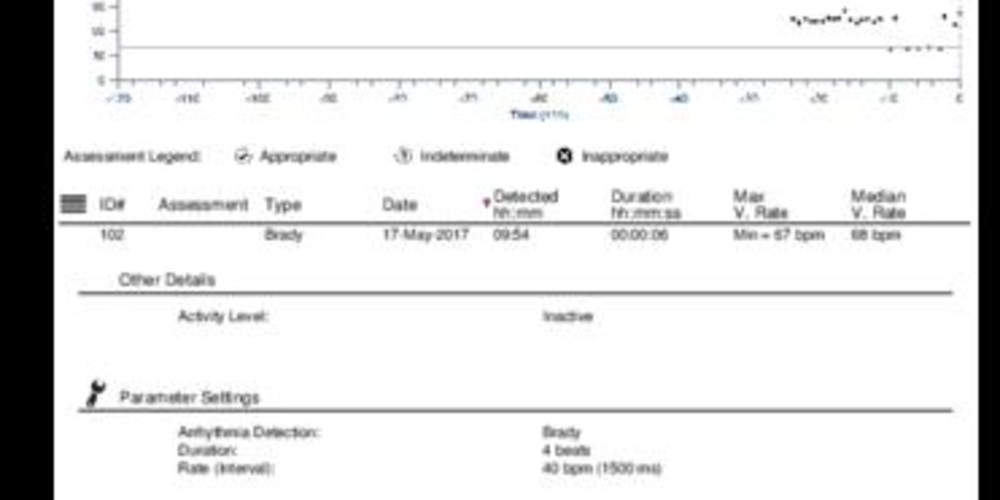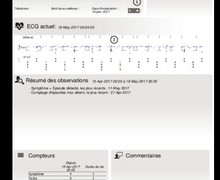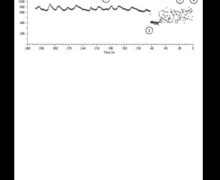Reveal Linq and false diagnosis of bradycardia
Tracing
Manufacturer Medtronic
Device ILR
Field Reveal Linq
N° 17
Patient
Same patient as in tracing 15.

Graph and trace
This episode is classified as Brady (4 consecutive RR cycles with interval> 1500 ms);
- on the tracing, there is a sinus rhythm with a large variability in R-wave amplitude; undersensing of small-amplitude complexes occurring after a more voluminous complex;
- after 4 long RR pseudo-intervals (> 1500 ms), diagnosis of bradycardia;
- the bradycardia episode ends after four consecutive R-waves detected with a ventricular interval less than or equal to the programmed interval.
Other articles that may be of interest to you






This episode corresponds to a false diagnosis of bradycardia in conjunction with undersensing of R-waves. The most frequent causes of false diagnoses of a pause by the device are
Different settings are available for programming in order to prevent the repetitive recording of false pauses. The sensitivity is not fixed during the cardiac cycle but rather adapts according to the amplitude of the detected R-wave with various programmable parameters. The sensing of an R-wave triggers a programmable blanking period (nominal value 150 ms) without possible sensing to prevent double counting of the R-wave. The sensing threshold is then set to 65% (non-programmable value) of the measured value of the R-wave. It should be noted that this threshold cannot exceed 0.65 mV. If an R-wave exceeds 1 mV, the sensing threshold is automatically set to 0.65 mV. The sensing threshold remains fixed for a programmable period (Stability threshold duration before decay, nominal value 150 ms). At the end of this time interval, the sensitivity increases (the threshold decreases) linearly for one second to reach 30% of the amplitude of the R-wave (non-programmable values). The sensitivity remains fixed until 1.5 seconds after the sensing of the previous R-wave. The sensitivity then increases up to 20% of the maximum value of the R-wave and then linearly thereafter until a new R-wave is sensed or the programmed minimum threshold is reached. The sensing threshold never falls below the programmed sensitivity setting (nominal value 0.035 mV). In order to avoid undersensing issues, it is possible to shorten the blanking value (poorly effective in this setting), to reduce the stability time of the threshold before decay or to reduce the programmed sensitivity value by verifying that the new programming is not associated with oversensing (P-wave, T-wave, myopotentials).
Various modifications have been made to the new devices in an attempt to reduce the false diagnoses of bradycardia or tachycardia which can saturate the device's memory.